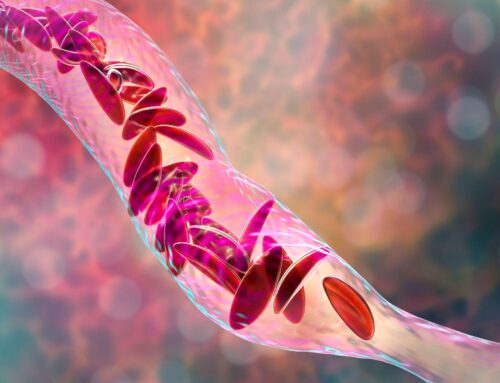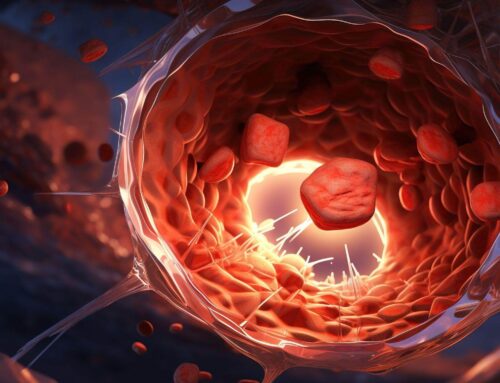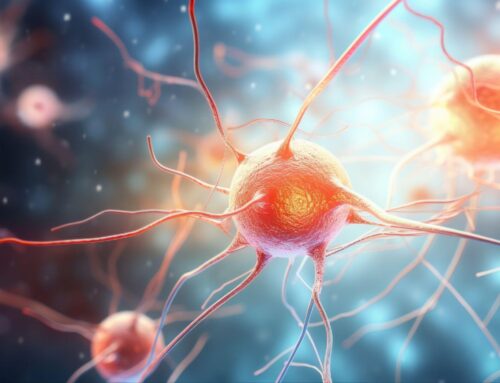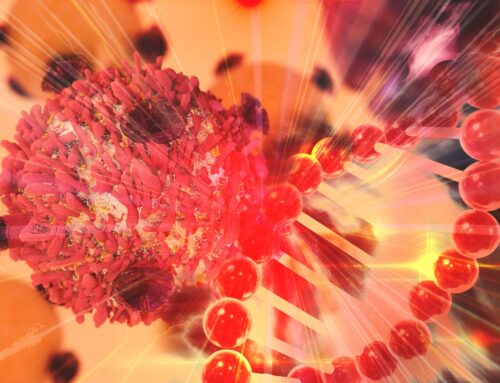Looking for something?
Hydrogels and Nucleic Acids – An Innovative Combination
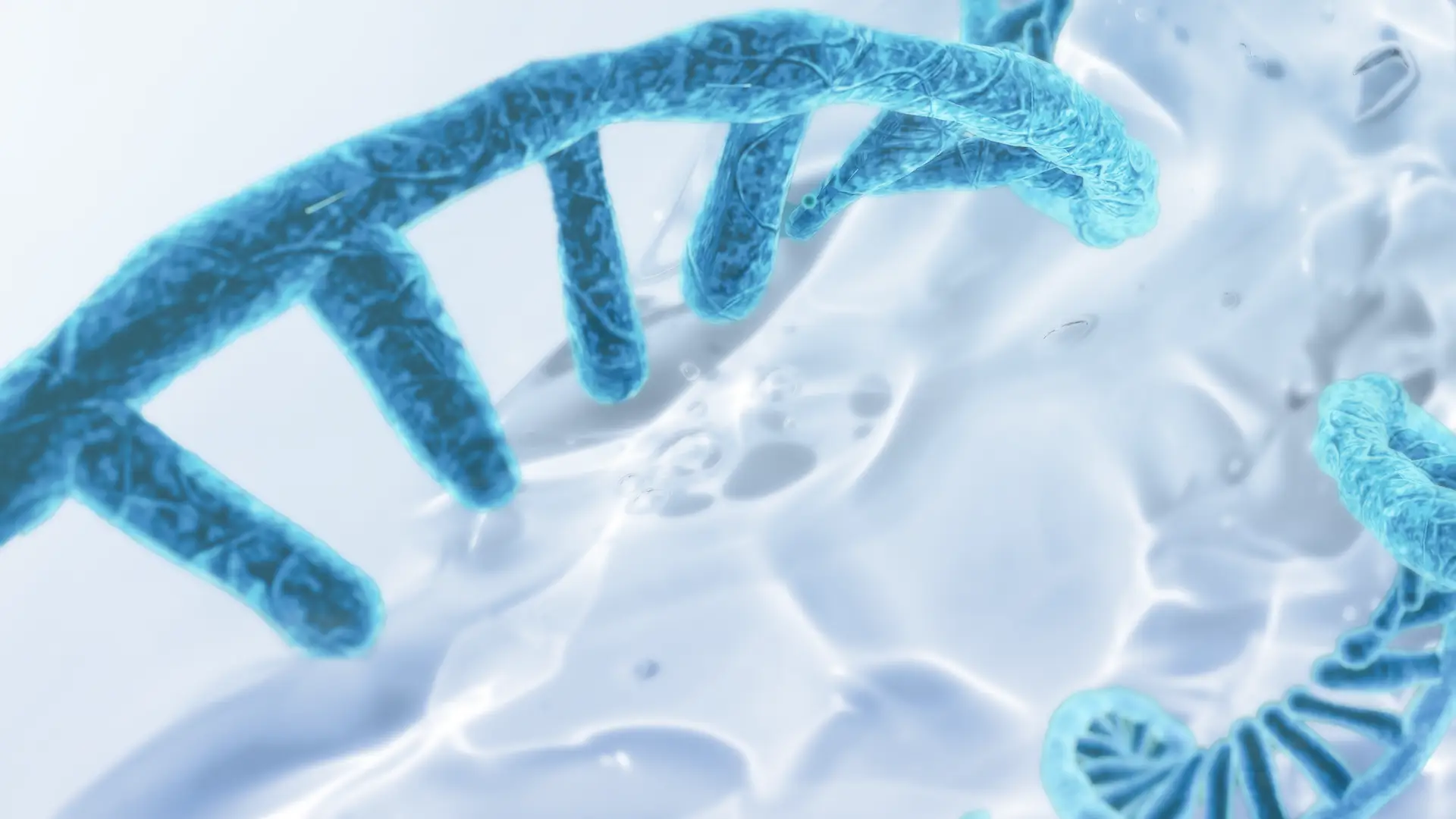
An incredible amount of time, effort, and money have gone into finding increasingly better ways to safely and effectively deliver nucleic acid based therapeutics. Many solutions have been developed that do indeed provide safe and effective delivery, and we have had many occasions to celebrate the approval of life-saving drugs in recent years. However, new solutions are always valuable. The combination of hydrogels and nucleic acid based therapies presents some remarkable opportunities in this space.
Unique Properties of Hydrogels Provide Specific Advantages
A hydrogel is a three-dimensional cross-linked hydrophilic polymer network that can absorb and hold large quantities of water (1, 2). The high water content allows it to be flexible, soft, biocompatible, and biodegradable. Hydrogels are responsive to stimuli such as chemicals, pH, light, and heat, depending upon their chemical composition (3).
Since hydrogels were first reported in 1960 (4), both natural and synthetic hydrogels have been investigated for a wide array of biomedical applications. Natural hydrogels are those sourced from natural polymers that may include proteins from the human body, including collagen and fibrin. Many advantages are inherent in natural hydrogels such as non-toxicity, biocompatibility, and biodegradability (5).
Synthetic polymers are used to create synthetic hydrogels, which have a long life, high strength, and can absorb more water (5). A commonly used polymer used in hydrogels is polyethylene glycol (PEG), as it does not stimulate the immune system (5). Important beneficial properties include porosity, swelling ability, stability, biocompatibility/biodegradability, and mechanical strength. Each of these can be tuned for specific application purposes (3).
Both natural and synthetic polymers have been combined to create semi-synthetic polymers in attempts to create a material that offers all the advantages of both natural and synthetic hydrogels.
The unique properties of hydrogels have allowed them to be used in a wide range of biomedical applications, such as wound dressings, hygiene products, tissue engineering, and contact lenses. (ACUVUE® OASYS®, AIR OPTIX® AQUA, and Biofinity® are all silicone hydrogel contacts.) Hydrogels are being investigated in drug delivery, biosensors, self-healing materials, improved tissue engineering (3), and many other important applications.
When used in wound dressings, hydrogels offer many advantages such as increasing collagen production and moisture, allowing oxygen transmission to the wound, and absorbing fluids. This prevents wound dressings from sticking to the injured area while helping prevent infection and increasing healing rate.
Hydrogel scaffolds are used to engineer and transplant tissues such as muscle, bone, and cartilage. As they can stimulate the native extracellular matrix, maintain a distinct 3D structure, provide mechanical support for the cells, and provide an ideal environment for cell survival, they are one of the most common tissue engineering scaffolds used (6).
Another interesting application is in drug delivery. Porosity allows drugs to be loaded or released, and changing the density of cross links controls the porosity of the hydrogel structure (5). This allows hydrogels to offer sustained drug release, for a controlled delivery over long periods. The porous structure of hydrogels also protects the drug from hostile environments and provides a matrix for drug loading (3).
In an interesting twist on the idea of using hydrogels for drug delivery, researchers at MIT and Brigham and Women’s Hospital developed a hydrogel material that stays in the stomach for as long as nine days, slowly releasing the medication dose. This slow release would greatly improve patient compliance. The capsule is swallowed while in a dehydrated state, and it swells in the stomach, preventing it from passing through the stomach, allowing the drug to release the drug slowly over many days (7).
While most hydrogels are formed from a single network of crosslinked polymer chains, that would not withstand the compressive forces of the stomach. So, the team intertwined two polymer networks to build a stronger material. Each polymer network is crosslinked with a different type of chemical bond, and the bonds can be dissolved on demand using biocompatible trigger compounds. This allows a patient to swallow an antidote in the event of a reaction, which will trigger the material to break apart and pass through the body safely (7).
Hydrogel + RNA
With all the benefits of hydrogels for drug delivery, it makes sense that the biomaterial would be investigated for delivery of nucleic-acid-based therapies. A recent review provided excellent information on hydrogel loading of RNAs, design for controlled release, and biomedical applications.
As the authors noted, most RNA-based therapies that have reached the clinical stage are based on chemical modification, ligand conjugation, or nanoparticle delivery, each of which has limitations (8). As such, macroscale hydrogels are being explored as their unique features allow for maintenance of RNA bioactivity, retention and prolonged release of RNA, high concentration of payload delivery to target sites “in an on demand/pulsatile manner via stimuli responsive strategies” (8). These features may offer a range of advantages, from improved RNA stability and mitigating off-target toxicities, to reducing the number of doses required and reducing the loss of therapeutics associated with systemic delivery (8).
Naked RNA can be loaded directly into the hydrogel, or by encapsulating RNA nanocarriers. Then, RNA-loaded hydrogels can be used as injectable gels or implantable scaffolds, providing a means of local delivery (8).
A beneficial feature of hydrogels lies in the ability to fine-tune the release of the desired payload. For example, a larger mesh and more degradable linkers allow for faster release, while smaller mesh and less degradable linkers provide a slower release. Furthermore, once administered, release of the RNA can be triggered by specific stimuli, by creating pH-responsive, enzyme-sensitive, or light-responsive hydrogels (8).
Preclinical studies of hydrogel-based RNA delivery have explored their use in many biomedical applications such as cancer therapy, immunomodulation, bone regeneration, cardiac repair, angiogenesis, and wound healing (8). Another potential application lies in incorporating gene-modified human mesenchymal stromal stem cells into a cryogel scaffold, which can then release certain antibodies capable of triggering T-cell-mediated anti-tumor responses.
Hydrogels also have potential as RNA nano-vaccines. In an animal model, the sustained release provided by an injectable hydrogel SARS-CoV-2 vaccine achieved higher total anti-receptor-binding domain IgG titers, and would also possibly allow for a single shot vaccine. However, sustained in vivo stability of mRNA in hydrogels will need to be examined before proceeding (8). This adds to the ever-evolving body of work to improve vaccines and therapies for SARS-CoV-2.
Hydrogels and microRNA combined to treat cancer
One particularly notable study examined microRNA in a peptide-based hydrogel that can be sprayed or injected to treat thin-tissue cancers. These types of cancer grow on the surface of body organs and the lining of body cavities. They are difficult to remove completely during surgery, so the residual cancer often results in a recurrence. One type of thin-tissue cancer, mesothelioma, is an aggressive, deadly cancer associated with asbestos exposure, and it grows on the lining around the heart, lungs, and abdomen.
A team that included Poulami Majumder, a former postdoctoral fellow in the Schneider laboratory at the Center for Cancer Research, National Cancer Institute, chose to work with microRNA, which can prevent the creation of proteins responsible for the propagation of specific cancers. They identified a microRNA sequence that suppresses mesothelioma. A strong, negative charge makes it difficult for microRNA to enter cells, so a delivery method needed to be developed to overcome this challenge (9).
Majumder made positively charged peptides that formed small particles (50-200 nm) when bound to microRNA, and these particles can enter cells. Inside the cell, the microRNA escapes and slows cancer propagation. The microRNA nanoparticles were then encapsulated in a peptide-based hydrogel that could be delivered via a spray or syringe during surgery or as the primary therapy. A primary advantage of the hydrogel is that it allows the microRNA to completely coat complex surfaces (9).
This tumor-specific miRNA hydrogel was tested in four mouse tumor models. One application alone – without any surgery – reduced tumor growth and improved survival rates of mice with mesothelioma tumors in the lung cavity, abdominal cavity, or under the skin (9).
The fourth model tested the hydrogel after surgically removing two tumors under the skin of one mouse. It was injected at one tumor removal site in the mouse. One month later, the untreated sites showed aggressive regrowth of the tumor, while the treated sites only showed faint tumor recurrence by bioluminescence (9).
Aptamers Can Functionalize Hydrogels
Hydrogels do not interact with any biological molecules, which is fundamental to many applications. So, hydrogels need to be functionalized with ligands that recognize target molecules. Aptamers, which can be developed with affinities and specificities in recognizing target molecules, can be incorporated into hydrogels as crosslinkers or pendant motifs (2).
Aptamer-functionalized hydrogels can be designed to provide sustained protein release, triggered protein release, and even self-programmed protein release. They can also be used for cell capture, such as identifying and isolating circulating tumor cells that result in metastasis. It could also be possible to create a bifunctional hydrogel that allows one layer to capture cancer cells, while the second layer provides sustained release of anti-cancer drugs (2).
Regenerative medicine and tissue engineering applications benefit from the protein release and cell-capture properties of aptamer-functionalized hydrogels. These hydrogels can also be developed as sensors for molecular biosensing, including fluorescent, electrochemical, or visual detection (2).
DNA, Hydrogels, and Information Storage
Have you ever run out of storage space on your computer or smartphone? Another growing application of hydrogels and nucleic acids in providing information storage may solve this problem.
DNA storage works by encoding data into DNA molecules expressed as a four-letter code (A, T, C, and G), and it could potentially hold up to 10 billion times more data than traditional storage methods. DNA provides dense, stable, sustainable, energy-efficient data storage of digital information. Yet, there are a great many difficulties in making this idea a reality, such as limited uptake, converting digital information to DNA code, and complex recovery techniques (1).
One team is investigating storing DNA in thermally responsive hydrogels, which they called TRFG hydrogel. First, they created a computer program that converted digital information to DNA code, which could then be converted back. Hydrogels were synthesized to allow high loading of DNA and controlled release, and the system was tested in a variety of ways (1).
The team found that TRFG hydrogels allowed high DNA uptake and long-term protection. The absorbed DNA was recovered easily by changing the pH of the solution, and the hydrogel could be reused. This system “notably improved DNA data density, long-term accuracy, recovery, and ease of use” (1).
Hydrogels – Embedded in Our Daily Lives
Hydrogels are already widely used in products such as contact lenses, diapers, and other hygiene products. While hydrogels have been increasingly utilized over the past few decades, the recent work that brings together hydrogels and nucleic acids is greatly broadening their usefulness to provide solutions in many different fields. It is fascinating to note that the same material used in contact lenses and hygiene products can be used for biosensors, drug delivery, capturing cancer cells, regenerating tissue, and even providing nearly unfathomable amounts of information storage.
References:
- Fei Z, Gupta N, Li M, Xiao P, Hu X. Toward highly effective loading of DNA in hydrogels for high-density and long-term information storage. Sci Adv. 2023 May 10;9(19):eadg9933. doi: 10.1126/sciadv.adg9933. Epub 2023 May 10. PMID: 37163589; PMCID: PMC10171811.
- Abune L, Davis B, Wang Y. Aptamer-functionalized hydrogels: An emerging class of biomaterials for protein delivery, cell capture, regenerative medicine, and molecular biosensing. Wiley Interdiscip Rev Nanomed Nanobiotechnol. 2021 Nov;13(6):e1731. doi: 10.1002/wnan.1731. Epub 2021 Jun 15. PMID: 34132055; PMCID: PMC8526380.
- Chai Q, Jiao Y, Yu X. Hydrogels for Biomedical Applications: Their Characteristics and the Mechanisms behind Them. Gels. 2017 Jan 24;3(1):6. doi: 10.3390/gels3010006. PMID: 30920503; PMCID: PMC6318667.
- Wichterle O, Lím D. Hydrophilic Gels for Biological Use. Nature. 1960; 185: 117-118, DOI: 10.1038/185117a0
- Amiri, S. (2023, February 7). Hydrogels in Biomedicine. News Medical Life Sciences. https://www.newsmedical.net/life-sciences/Hydrogels-in-Biomedicine.aspx
- Mantha S, Pillai S, Khayambashi P, Upadhyay A, Zhang Y, Tao O, Pham HM, Tran SD. Smart Hydrogels in Tissue Engineering and Regenerative Medicine. Materials (Basel). 2019 Oct 12;12(20):3323. doi: 10.3390/ma12203323. PMID: 31614735; PMCID: PMC6829293.
- Liu J, Pang Y, Zhang S, Cleveland C, Yin X, Booth L, Lin J, Lucy Lee YA, Mazdiyasni H, Saxton S, Kirtane AR, Erlach TV, Rogner J, Langer R, Traverso G. Triggerable tough hydrogels for gastric resident dosage forms. Nat Commun. 2017 Jul 25;8(1):124. doi: 10.1038/s41467-017-00144-z. PMID: 28743858; PMCID: PMC5527117.
- Zhong R, Talebian S, Mendes BB, Wallace G, Langer R, Conde J, Shi J. Hydrogels for RNA delivery. Nat Mater. 2023 Mar 20. doi: 10.1038/s41563-023-01472-w. Epub ahead of print. PMID: 36941391.
- Majumder P, Singh A, Wang Z, Dutta K, Pahwa R, Liang C, Andrews C, Patel NL, Shi J, de Val N, Walsh STR, Jeon AB, Karim B, Hoang CD, Schneider JP. Surface-fill hydrogel attenuates the oncogenic signature of complex anatomical surface cancer in a single application. Nat Nanotechnol. 2021 Nov;16(11):1251-1259. doi: 10.1038/s41565-021-00961-w. Epub 2021 Sep 23. PMID: 34556833; PMCID: PMC8595541.
“The views, opinions, findings, and conclusions or recommendations expressed in these articles and highlights are strictly those of the author(s) and do not necessarily reflect the views of the Oligonucleotide Therapeutics Society (OTS). OTS takes no responsibility for any errors or omissions in, or for the correctness of, the information contained in these articles. The content of these articles is for the sole purpose of being informative. The content is not and should not be used or relied upon as medical, legal, financial, or other advice. Nothing contained on OTS websites or published articles/highlights is intended by OTS or its employees, affiliates, or information providers to be instructional for medical diagnosis or treatment. It should not be used in place of a visit, call, consultation, or the advice of your physician or other qualified health care provider. Always seek the advice of your physician or qualified health care provider promptly if you have any healthcare-related questions. You should never disregard medical advice or delay in seeking it because of something you have read on OTS or an affiliated site.”




